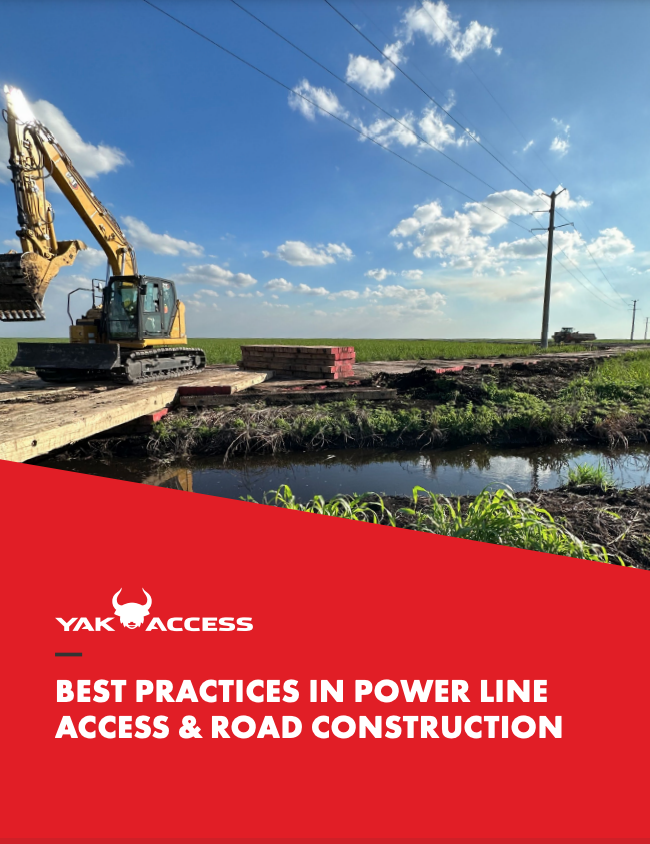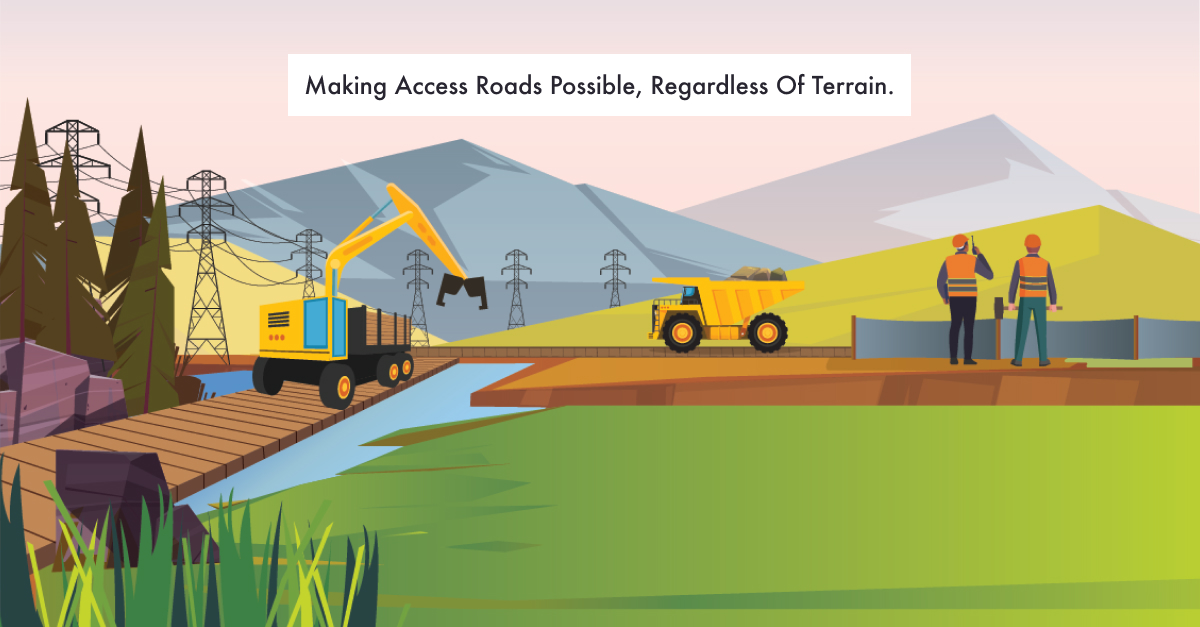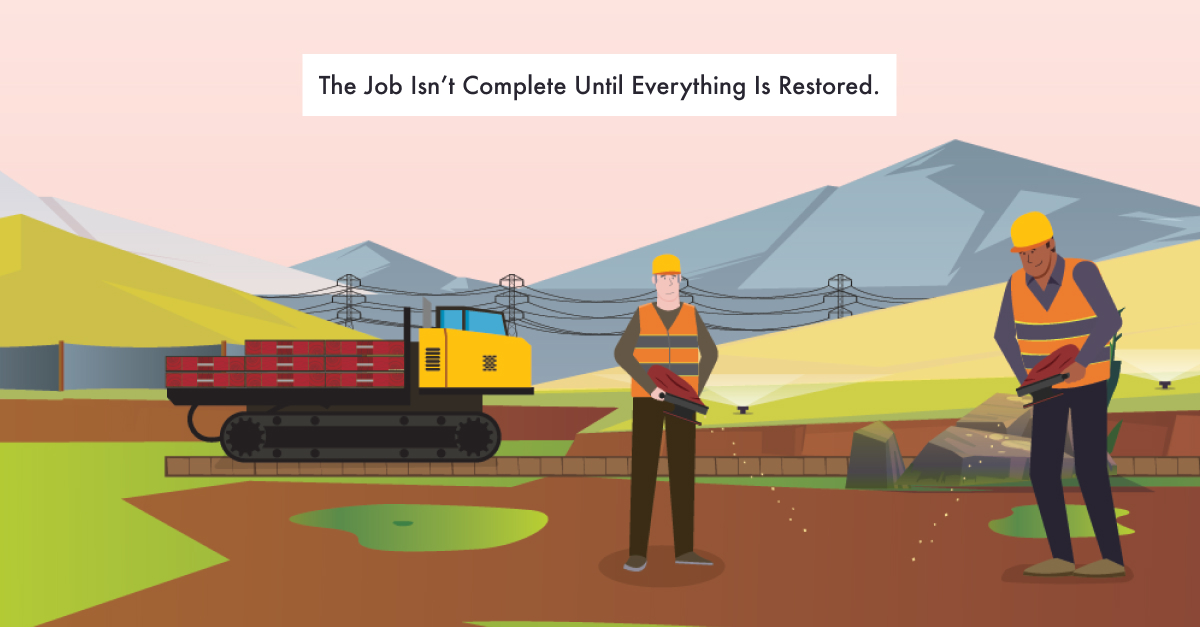SAFE ACCESS
Safety is the most important consideration for any access solution. Many power or transmission lines are located in remote areas that are difficult to access. There may be no existing roads and many challenges to overcome, including steep grades, dense vegetation, flowing streams, and other obstacles.
No matter the terrain or the weather, workers need to be able to safely access the site, stabilize equipment, move materials, and so on. To do this, they need stable, reliable roads that won’t shift or buckle. Once access solutions have been implemented to allow teams to get to and from the site, equipotential zones (EPZ) grounding grates are critical in creating a safe work zone.
EFFICIENT ACCESS
Crews should be able to focus on the work at hand, not on the details of site access. The more efficiently crews can get in and out of the site, the more likely they are to stay within budget and meet deadlines. This is especially important for power lines because people depend on uninterrupted service. Creating customized access road strategies for each site will ensure that the right materials are used in the right circumstances, with no waste or unnecessary extra costs.
SUSTAINABLE ACCESS
Environmental regulations require certain activities to minimize impact. These could include:
- Reducing runoff.
- Preventing pollution from entering waterways.
- Protecting endangered species.
- Preventing the spread of invasive species.
Avoid fines and reputational damage by complying with environmental regulations and leaving no trace after power line work is complete. This includes using site access strategies that minimally disrupt the ground below, removing all materials from the site, and employing site restoration activities as needed.
CUSTOMIZED ACCESS
Every site is different, so the strategies used for one power line project might not work for the next. Farmland, wetlands, waterways, forests, and mountains all present unique site access challenges, and some sites may include multiple types of terrain. This is why tailored solutions are required to ensure safe access and meet the specific environmental requirements of the site. Because of this, many sites use multiple systems for the most cost-effective approach. Your project might need a combination of wetland access solutions, gravel pads, timber mat roads, and so on.
FLOATING ROAD ACCESS FOR TRANSMISSION REPAIR ON A REMOTE ISLAND
When a Maine utility company needed to send crews to a remote island to maintain a transmission structure that serves 646,000 customers in an 11,000-square-mile area, they turned to us for expert help. YAK ACCESS company BLUROC used the emtek® wetland access system to:
- Build a 1,300-foot-long, 14-foot-wide floating road.
- Support up to 87,500 pounds of heavy equipment.
- Protect the fragile ecosystem of the Great Salt Bay.
- Complete the project two months ahead of schedule with zero safety incidents.





